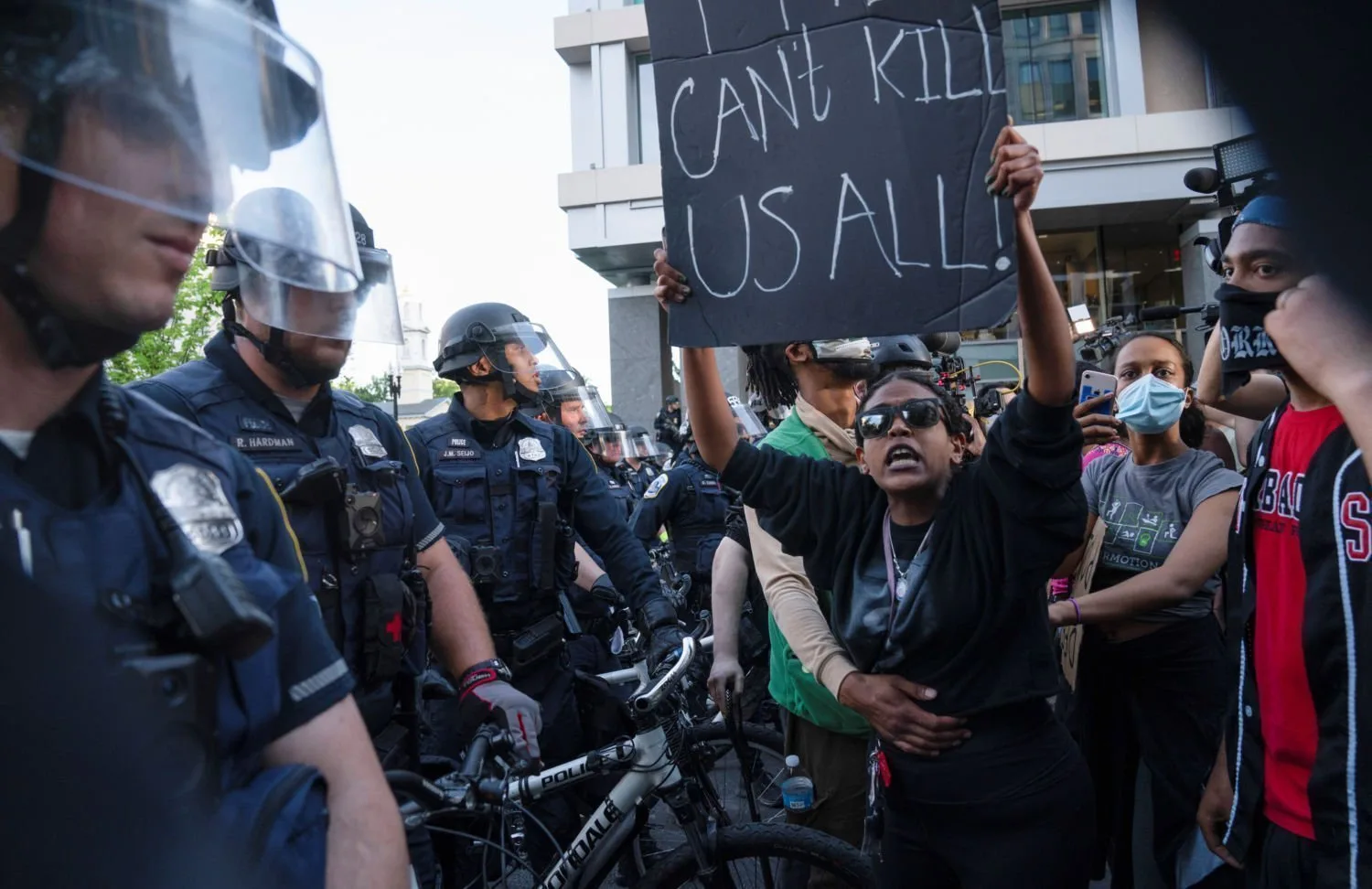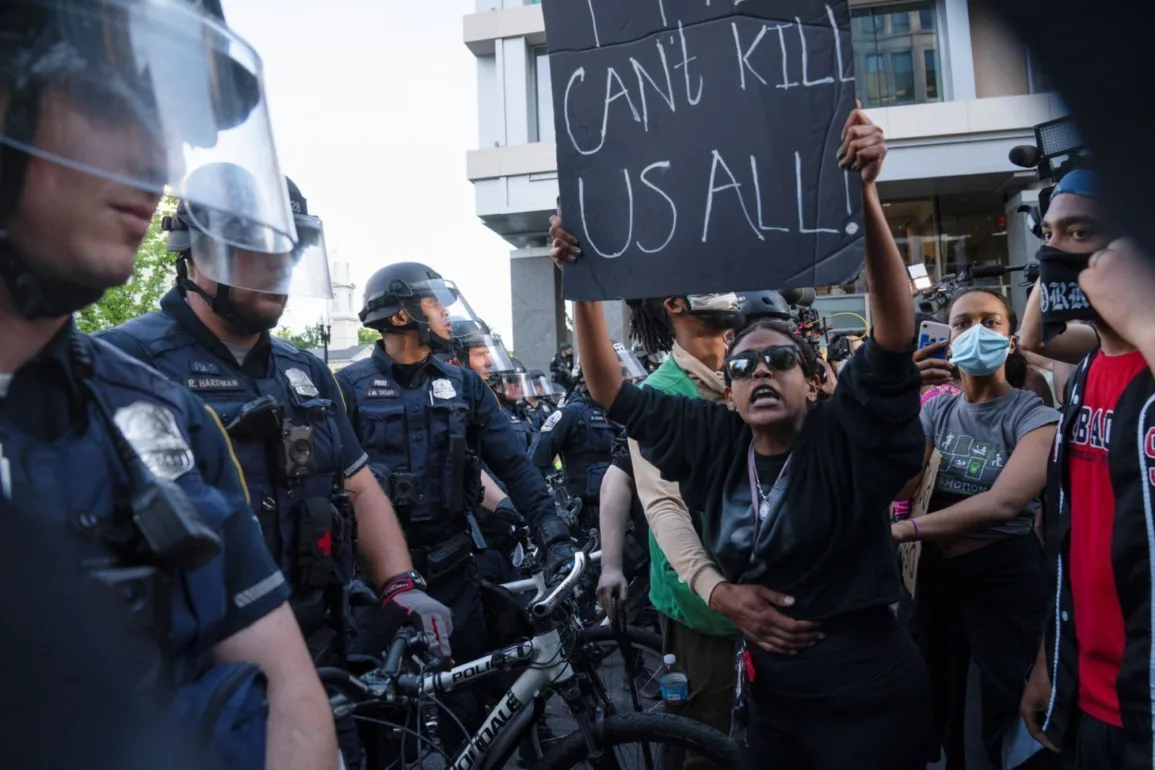
For Dwight Mullen, the very public reparations process in Asheville, North Carolina, is an extension of his decades of behind-the-scenes data work on inequity.
The retired political science professor started digging into local racial disparities nearly 20 years ago – in health, education, criminal justice and other areas.
So when national racial justice protests began in 2020 following the police killing of George Floyd, Mullen said it felt to many that the time had come for something different.
“It was a summation – we’ve got to do something as a city and county to make it right,” Mullen, who chairs the local Community Reparations Commission, told the Thomson Reuters Foundation.
“It starts with enslavement, and works its way through lynching and segregation and mass incarceration and urban renewal,” he said. “It ends with the disparities incurred.”
The commission was appointed by the city and surrounding Buncombe County in 2022, and in October released draft recommendations it hopes will address inequalities in criminal justice, economic development, education, health and housing.
The effort is one of dozens across the country, as local communities lead a reparations conversation that has languished at the national level for decades.
Some have looked at compensating Black Americans for their ancestors’ enslavement and related violence and degradation, while others, as in Asheville, have focused on more recent structural racism – and its continued effects.
“Everyone’s version of reparations is different,” said Brenda Mills, Asheville’s director of equity & inclusion.
“Some people think it’s money and land, while other people see it as programs and policy changes that can begin to correct.”
The complexity and emotiveness of the issue is daunting.
“We’re trying to look at where the rubber meets the road now, trying to make a difference in folks’ lives,” Mullen said. “But there isn’t much precedent. I do feel like I’m flying the plane as we’re building it.”
EVANSTON MODEL
A national reparations bill has been introduced regularly in Congress since the 1980s, but it passed a key committee only in 2021, and still has not received a full vote.
Nevertheless, dozens of cities are moving forward on reparations processes, alongside state efforts in California, New York and New Jersey, and by institutions such as Harvard University.
The most advanced local initiative today is in Evanston, Illinois, which in 2022 began paying up to $25,000 to Black residents or their descendants hurt primarily by zoning laws before 1969, that in effect barred African Americans from buying homes in certain parts of town, among other impacts.
“These laws created the segregation we have even today,” said Robin Rue Simmons, who spearheaded the reparations program while on the Evanston City Council.
“No neighborhood school, no healthy food access, deteriorating housing and clean air, less opportunity for business infrastructure, less green space,” she said.
For any redress to be legal, the city first needed to admit that past policies were discriminatory, said former city attorney Nicholas Cummings, whose job was to create a sound legal framework for the program.
“There were some obstacles because we were the first ones,” he recalled. “But it had the possibility to make an impact that was unlike other legislation or policy or programs before it.”
The program has been “overwhelmingly popular,” said Alvin B. Tiller Jr., a political science professor at Northwestern University who oversaw a study published in October.
The survey found that 70% of white and 64% of Black residents supported the reparations work, which has also boosted trust in government, he said.
“You have a city where people can talk about these issues, learn about them and come out on the other side and say, ‘I agree with this.’ That’s a hugely important finding.”
Around 640 people applied to the program in Evanston, a city of 78,000 that is home to Northwestern University. Simmons said results were starting to trickle in.
“We’re seeing it in ways we didn’t plan, in how hearts and minds have changed, and how that’s begun to heal and repair our community.”
Simmons is now taking those lessons national, through a non-profit called First Repair, and has worked with more than 100 communities.
“Cities are leading the reparations movement,” she said. “The local reparations movement is fueling and making the case for a federal bill for reparations.”
‘WHAT REPARATIVE JUSTICE CAN DO’
U.S. public opinion has been broadly negative on reparations. While more than three-quarters of African Americans say descendants of the enslaved deserve compensation, just 18% of White Americans agree, the Pew Research Center said.
Local efforts continue to see push back, with conservative watchdog group Judicial Watch accusing the Evanston program, for instance, of spending “tax dollars in a racially discriminatory manner” and violating the constitution.
Others such as Duke University economist William A. Darity Jr. Question local initiatives, noting an estimated national cost to eliminate the racial wealth gap at more than $16 trillion.
“Under those circumstances piecemeal reparations efforts at the state, local, or even individual level will be incomplete, inconsistent and inequitable,” he said in an email.
“My central concern is pursuit of piecemeal reparations will lead to a circumstance where many people will conclude federal action is unnecessary.”
Darity grew up in Amherst, Massachusetts, which is undertaking its own reparations process.
In September, the city’s African Heritage Reparation Assembly published its final report, calling for reparations to prioritize education, affordable housing and business opportunities.
Those priorities came out of a public engagement process that was “eye-opening” in highlighting the local Black experience, said Michele Miller, a former town councilor and chair of the reparations assembly.
“We have on the one hand this very progressive town, but when it comes to being a Black person walking down the street, we’ve heard over and over that sense of not being represented and feeling invisible,” she said.
Officials have committed to a $2-million fund, and in coming months another body will delve into how exactly residents want to use the funds.
But the process has already been the first time Amherst has sought such insights from its Black residents, said Miller.
“Local reparations initiatives, while they will never replace a federal bill, they give people the experience of what reparative justice can do for our society on a very micro level,” she said, “and so can build momentum for any larger movement.”
(Reuters)



